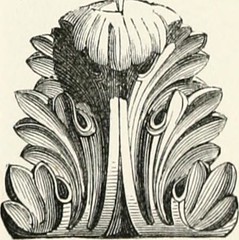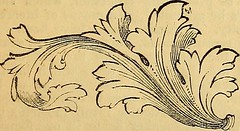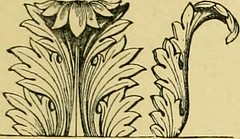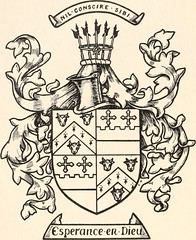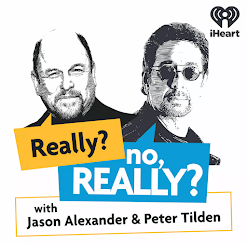@jobrodie Where do you find any mention of homeopathy in the coroner report https://t.co/uKRtBmQhgZ no matter what @bengoldacre writes ? 1/— Ivana Fulli (@DrFulli) March 26, 2016
The mother's death occurred shortly after giving birth and resulted from massive blood loss from a tear that seems to have been missed. There were a series of events that combined to slow down an appropriate emergency response which came too late, and the mother died. The detailed coroner's report is here. I found that no amount of using Ctrl+F to 'find' words on a page worked on my computer (not sure why) so I've read the 86 page document.
Some of the press articles present the story as a homeopath midwife failing to call an ambulance (even after the mother begged for one), and giving the mother a homeopathic remedy instead of doing something useful. There has also been the implication that, being of a homeopathic mindset, the midwife eschewed real medical interventions in favour of homeopathy, and gave bad advice. Naturally there has been much amazement and horror among the skeptic / medical community that there has been another homeopathy-related death.
I, and others, were challenged to find mention of homeopathy in that coroner's report and here's what I found, on page 70 of 86.
But is it homeopathy?
Two remedies are mentioned here - (i) Arnica and (ii) Rescue Remedy. Only the latter is listed as being a 'homeopathic Bach flower remedy' though in fact I think that may be mistaken. Bach flower products (in the UK they are no longer allowed to call them medicines and are now classed as a foodstuff) would not be considered homeopathic: neither in the way they are prepared (they are not diluted beyond the point of reasonableness) nor in the underlying philosophy of 'like treating like' - but see note on flower remedies below. I do not know how they are prepared in Australia however, but assume it's the same product. That leaves Arnica and it's not clear from the report whether the remedy used was a homeopathic one that contains no or negligible amounts of actual Arnica plant material or a herbal preparation that does contain measurable plant material.
Though note...
— MedTek (@medtek) March 26, 2016
So from the information I can access I think it is difficult to know whether homeopathy was directly involved in the treatment of this young woman, or indirectly as a (speculative) ideological barrier to real treatment. It is possible that it was not involved at all.
From page 77 of 86 - of course this bias doesn't prove that the midwife was a fan of homeopathy or that any beliefs about homeopathy caused her to deliberately avoid hospitals.
I've also done a fairly extensive search of what I believe to be the midwife's Twitter feed (unconfirmed) and can find only a single reference to homeopathy from a few years ago (I checked the terms homeopathy homOeopathy and the -path endings) - of course it is possible that any homeopathy-mentioning tweets have since been deleted. A search on google didn't bring anything up that confirmed that she was a homeopath, or had administered homeopathy in her usual practice - beyond the news reports implying that she did. I don't know where the news reports got their information (they may have interviewed people and got more information than is available to me via Google or the coroner's report).
So at this stage I do not know from the available information if it is true that the midwife was a homeopath or user of homeopathy - or if she was ideologically opposed to getting prompt medical treatment. In other words I don't know if this post is a mea culpa or a 'dangerous homeopathy fan strikes again'. Clearly, as this isn't the only death she's been linked to, I'm not sure she should be doing too much midwifery.
But it is possible that homeopathy has been unfairly maligned in the reporting of this story. Homeopathy is most decidedly unmitigated twaddle but we skeptics can't blame it for everything.
Note on flower remedies
"Flower remedies are produced by dropping fresh flowers into water; this yields the “mother tincture” to which brandy is subsequently added as a preservative. Thus they do not contain pharmacologically relevant amounts of constituents of the flowers they originate from. Flower remedies thus have similarities to homeopathic medicines, yet there are clear distinctions between the two systems. According to proponents of flower remedies, their mode of action does not depend on molecular or pharmacological mechanisms but on the subtle “energy” that is transmitted from the flowers to this remedy. This “energy” has so far defied quantification, and critics therefore argue that flower remedies are pure placebos."
Bach flower remedies: a systematic review of randomised clinical trials (2010) Edzard Ernst, Swiss Medical Weekly
Further reading
Why birth is a feminist issue (December 2013) - written by the midwife in question
News articles about this case
Coroner says Caroline Lovell died after midwife Gaye Demanuele let her 'bleed out' in birthing pool (24 March 2016) The Age
"Around this time, Ms Demanuele gave Ms Lovell a homeopathic "rescue remedy" for anxiety despite her body shutting down due to massive blood loss." - is it homeopathic?
Coroner recommends criminal action be considered against home birth death midwife Gaye Demanuele (24 March 2016) Geelong Advertiser
"“We are aware of another home birth, in mid 2011, when a woman begged for Ms Demanuele to call an ambulance. Demanuele refused. The baby died."
Mother of two died in a birthing pool after her midwife would only offer a homeopathic 'rescue remedy' as she 'bled out' while begging for an ambulance (24 March 2016) Daily Mail
"Despite Ms Lowell being in an extremely distressed state, Ms Demanuele would only give her a homeopathic 'rescue remedy' in spite of the massive blood loss causing her body to shutdown." - same question as above, were either of the two remedies given homeopathic.


